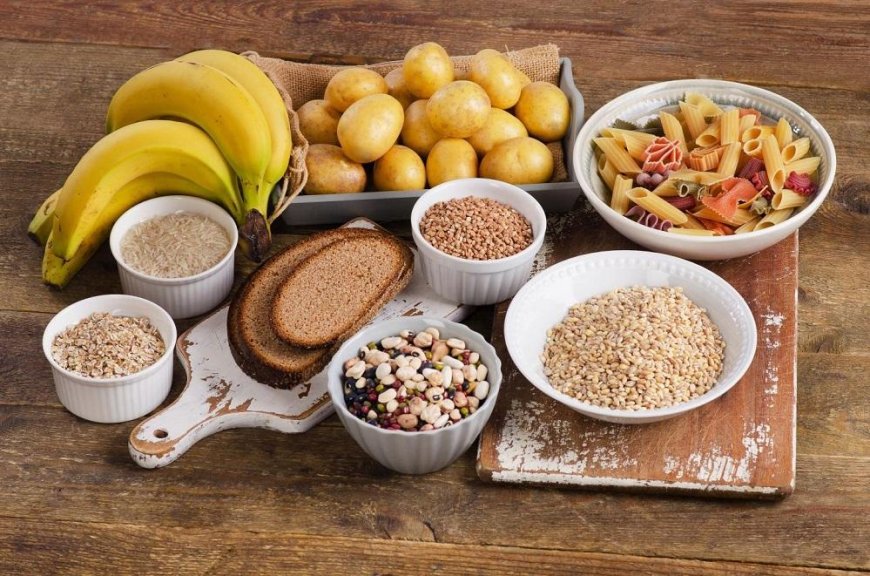4 benefits of resistant starch
of foods with resistant starch produces a number of positive effects on intestinal and general health. 4 benefits of resistant starch.

Regular consumption of foods with resistant starch produces a number of positive effects on intestinal and general health. 4 benefits of resistant starch.
Help us spread it. Knowledge makes sense only when it is shared.
Resistant starch benefits
Resistant starch intake carries a number of health benefits, provided it is introduced in the context of a varied and balanced diet. They are as follows.
It also reduces the risk of developing 2 type diabetes
Like many other types of fiber, resistant starch slows gastric emptying and delays the absorption of carbohydrates from the intestine.
In this way, a much lower impact on blood glucose is experienced after the intake of carbohydrates, which generates less stress at the pancreatic level.
This effect is decisive in order to prevent alterations in the metabolic state.
One of the most common is type 2 diabetes, caused by insulin resistance that increases over time.
Ensuring the presence of optimal amounts of fiber in the diet has been shown to reduce the incidence of this pathology (2).
Avoid constipation
Resistant starch is an element capable of increasing the volume of the stool bolus.
From here, a more effective stimulation of the mechanoreceptors of the digestive tract is experienced, which causes more intense peristaltic movements. The result is a much more fluid intestinal transit.
In fact, consuming a low amount of fiber is associated with a higher risk of developing constipation in the medium term (3).
It is necessary to complement this dietary strategy with a correct intake of fluids and the practice of physical exercise on a daily basis to facilitate the descent of the fecal bolus.
Improves the health of the microbiota
From the fermentation process of resistant starch, the bacteria that inhabit the digestive tract obtain the energy to grow and multiply.
This ensures that the density of the microbiota is correct, which allows a good digestive function. Furthermore, a series of anti-inflammatory compounds can be generated from fermentation, such as short-chain fatty acids (4).
For this reason resistant starch can be included in the group of prebiotic substances.
Must Read: 5 keys to choosing your children school
Its inclusion in the diet on a regular basis makes it possible to prevent situations of dysbiosis or alteration of homeostasis in the internal environment.
It must be taken into account that the impacts on the bacteria that inhabit the tube can also condition the development of intestinal-type inflammatory pathologies.
Contributes to weight loss
Resistant starch is able to increase the feeling of satiety, which leads to eating less and posing a hypocaloric diet situation.
From here fats are mobilized and oxidized for energy production, resulting in progressive weight loss.
In addition, the inclusion of fiber in the diet helps prevent metabolic pathologies.
When you experience a situation of insulin resistance or diabetes, you lose metabolic flexibility, that is, the body becomes less efficient when choosing the right substrate for energy production.
Such a situation could be counterproductive when the goal is to lose weight.
How to increase the amount of resistant starch in food?
A good way to increase your intake of resistant starch is to let the grains cool after cooking before consuming them.
In this way, if rice or oats are cooked, it is advisable to put both products in the refrigerator for a few hours to compact them. This increases the proportion of fiber, which improves intestinal function.
A good way to include these products in the diet is to incorporate them into salads or different cold preparations. These dishes are well accepted by almost all members of the family.
Contraindications of resistant starch
Although it is a potentially beneficial food for health, there are some situations in which it is not advisable to consume resistant starch on a regular basis.
An example would be a case of bacterial overgrowth in the proximal gastrointestinal tract, known as SIBO. In this context, starch can provoke the development of pathogens that have settled in the tube, worsening the symptoms.
The same happens when an intestinal dysbiosis has been diagnosed.
Even in the case of inflammatory bowel diseases, it may be appropriate to restrict fiber intake for some time, at least for the duration of the acute symptoms.
Afterwards, it will be optimal to bet on a restructuring of the flora with the reintroduction of the fiber progressively.
Include resistant starch in the diet to improve health
As you have seen, the inclusion of resistant starch in the diet is considered beneficial for health for several reasons.
To increase the consumption of this substance, it is enough to ensure that foods with cold complex carbohydrates are ingested, such as legumes, tubers, cereals or grains
With this strategy, several chronic and complex pathologies that can condition the proper functioning of the body will be prevented. At the same time, the supply of carbohydrates, the macronutrients necessary to achieve good energy levels on a day-to-day basis, is ensured.
Of course, it will be necessary to combine this strategy with the approach of a varied and balanced diet and with the regular practice of physical exercise. Only in this way will really satisfactory results be achieved.
